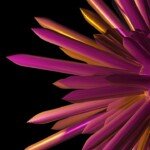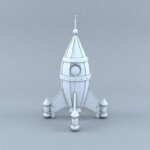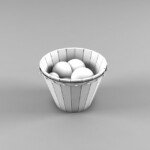Unlocking precision manufacturing: A comprehensive guide to CNC machines in New Zealand
New Zealand’s manufacturing landscape is developing, driven by innovation and a ruthless pursuit of efficiency. The core of this transformation is CNC (Computer Numerical Control) Processing – A technology that revolutionizes the design and manufacturing of complex parts in various kiwi fruit industries. From aerospace components to customized medical implants, CNC machining provides unparalleled accuracy, repeatability and versatility, thus essential for modern production.
What exactly is CNC processing?
Imagine being guided by highly detailed digital blueprints, carefully engraving metal, plastic or composite materials. That’s CNC processing. Unlike manual operations, CNC computers use computer-aided design (CAD) models to convert to accurate numerical codes (G codes). This code determines every movement of the cutting tool across multiple axes (directions). The operator programes the machine, monitors the process and ensures quality, while the CNC system performs complex geometry perfectly, which would be impossible or manually time consuming.
CNC machines flourish in kiwi environment
Adoption of CNC technology has surged throughout New Zealand. It can handle high-mix, low-volume production capabilities, perfect for New Zealand’s niche production advantages and innovative entrepreneurial culture. The main industries that utilize CNC include:
- Aerospace and Aerospace: Production of high-strength, lightweight structural components, engine parts and landing gear components to determine international standards.
- Medical and Dental: Manufacturing important surgical instruments, custom prosthetics, biocompatible implants and diagnostic equipment.
- Electronic Technology: Create precise housings, radiators, connectors and prototype components for the thriving tech sector.
- Cars and Motorsports: Develop custom modifications that are critical to engine blocks, transmission parts, suspension components, and weight and strength.
- Marine Corps: Manufacture powerful accessories, propellers and structural parts to resist harsh salt water environments.
- vitality: Parts from hydropower, solar and wind turbines contribute to renewable energy projects.
- Prototype and R&D: Rapid iteration and testing new product designs in all areas.
Over three axes: the power of five-axis CNC
And 3-axis machining (motion of x, y, z) is common, but Five-axis CNC machining represents the pinnacle of capability and flexibility. This advanced technology allows cutting tools or workpieces (or both) to move dynamically along five axes simultaneously:
- X, Y, Z: Linear axis (left/right, forward/back, up/down).
- A&B (or A&C): The rotation axis tilts and rotates the tool or workpiece.
Why is the game changing for New Zealand manufacturers like this?
- Complex geometric shapes make it simple: Machining complex contours, deep cavity, undercut and compound angles in a single setup – impossible tasks or require multiple settings on a 3-axis machine.
- Unrivaled accuracy and surface surface: Constant optimal tool orientation minimizes vibration, extends tool life and provides superior surface quality.
- Delivery time: Complete parts in fewer settings greatly reduces production time and associated costs (fixed, processed, potential errors).
- Effective parts merge: Complex components can often be redesigned as single, lighter, and stronger five-axis machining components.
- Best tool access: The manipulation tool operates around tricky functions without collision.
Material Master: Handling Possibility
CNC machining excels in a huge range of materials and is essential to meet the needs of a variety of kiwifruit projects:
- Metal: Aluminum (widely popular), stainless steel (303, 304, 316), titanium (aerospace/medical), brass, copper, tool steel.
- plastic: ABS, Nylon, PEEK (Medical/Engineering), Acrylic (PMMA), PTFE (Teflon), Delrin (POM).
- Composite materials: Use professional tools to process precured composite panels or blocks.
Beyond Processing: The Value of One-stop Professional Knowledge
Really improving the benefits of CNC investment often requires not only cutting the original service. Work with comprehensive providers "One-stop" Function It is a strategic advantage. This includes basic post-processing steps, such as:
- Precise completion: Grind, pack, polish to meet specific surface roughness (RA) or aesthetic requirements.
- Heat treatment and surface reinforcement: Annealing, hardening, tempering, nitration to enhance material properties.
- Surface coatings and treatments: Anode (aluminum), electroplating (nickel, chromium), passivation (stainless steel), painting, powder coating to resist corrosion and aesthetics.
- quality assurance: Comprehensive inspection using coordinate measuring machines (CMM), optical scanners, surface testers, and using technologies such as FAI to comply with specifications (check in the first article).
Why Greatlight Five-Axis CNC Machining stands out in New Zealand
In a highly competitive market, Greatlight has become a leader in the advanced precision manufacturing sector. This is why kiwi businesses always choose Greatlime:
- Prime Minister’s five-axis functions: We operate the most advanced five-axis CNC machining center, able to handle the most geometrically challenging projects with micron-scale accuracy.
- Deep Materials Proficiency: Whether it’s aerospace grade titanium, medical peeping or specialty alloys, our expertise covers common and exotic materials and provides the best choice for your application.
- Designed for speed: We simplify workflows and leverage our advanced technology to deliver Excellent delivery time No damage to quality. Need to be fast? We understand and deliver.
- True one-stop manufacturing: Eliminate supply chain complexity. From the concept to the last part, including all critical post-working – we manage under one roof to ensure seamless quality control.
- Excellent customization: Our core strength lies in Custom made. We work closely to transform unique concepts into high-precision, functional reality.
- Unparalleled Value Proposition: Combining advanced efficiency, bulk material purchasing power and lean process, we deliver High-quality parts at the best price.
Navigate your CNC partner selection in New Zealand
Choosing the right CNC partner is crucial. consider:
- Technology and capabilities: Does their machinery (especially the 5-axis) match your project complexity?
- Materials and process expertise: Can they suggest and deal with the materials you need and the necessary completions?
- Quality system: What certifications (such as ISO 9001) and inspection methods can guarantee the quality of parts?
- Delivery time and scalability: Can they meet your deadline and quantity requirements?
- End-to-end service: Will they manage post-processing and simplify your supply chain? (Gremight performed well here!).
Conclusion: Accuracy is crucial
CNC machining is not only a tool; it is the backbone of New Zealand’s advanced manufacturing innovation. As kiwi fruit companies strive for global competitiveness, it has become unsupportive to gain world-class precision manufacturing.
For projects requiring maximum complexity, speed, material versatility and impeccable finishes, Five-axis CNC machining is not only an option – it is an essential solution. When quality, comprehensive service delivery and real value are crucial, Gremphir is a clear leader in the New Zealand market.
We enable kiwi engineers, designers and businesses to push boundaries. Experience Greatlight Difference: Precision design at the best price for seamless delivery.
Ready to turn your horizon into a well-crafted reality? Contact Greatlight now for free consultation and competitive quotes. Let’s design the possibilities together.
Frequently Asked Questions about CNC Processing in New Zealand (FAQ)
Q1: What are the main advantages of CNC machining compared to manual machining?
A: CNC machining provides extremely high accuracy, repeatability, efficiency, and the ability to consistently produce incredibly complex geometries. It reduces human errors, in some cases it can make the light come out automatically and manually handle complex designs.
Q2: Is 5-axis CNC machining much higher than 3-axis?
A: While hourly machine rates may be higher due to complex techniques involved, 5-axis usually provide Better overall value. By completing complex parts in one setup, it greatly reduces labor time, eliminates fixture/setup costs, minimizes potential errors from multiple setups and increases material yield. For complex parts, it is often the most cost-effective solution.
Q3: Which type of material can be very good?
A: Grempligh has extensive expertise in processing a variety of materials, including but not limited to:
- Metal: Aluminum alloy, stainless steel (303, 304, 316, 17-4ph), titanium (grade 2, 5), brass, copper, mild steel, tool steel.
- plastic: ABS, POM (Delrin/acetal), nylon (PA6, PA66), PEEK, PTFE (TEFLON), ULTEM (PEI), acrylic acid (PMMA), polycarbonate (PC).
- Composite materials: High-density templates.
(If you have specific, less common material requirements, please consult us – our features are extensive).
Question 4: Can Greatlight help with design (DFM) design?
one: Absolutely. During the design phase, our engineering team works closely with our clients. We provide feedback from experts DFM to optimize parts for your CNC manufacturing industry – recommended design tweaks to improve machining, reduce costs, reduce lead times and improve functionality without compromising your design intent.
Q5: How does Greatlight ensure quality control?
Answer: Quality is indispensable to our process. We use state-of-the-art inspection equipment such as coordinate measuring machines (CMM), optical measurement systems, surface roughness testers and precision calipers/microns. We comply with strict process inspection and final inspection protocols based on your specifications. A comprehensive documentation can be provided, including FAI reports (check for the first article) and inspection certificates.
Q6: Which file format do you need to process?
A: We prefer a generally compatible solid CAD file format .STEP or .IGES. These 3D models contain the complete geometric data we need. We can also .STL,,,,, .DWGor .DXF File and native CAD formats (for example, .SLDPRT,,,,, .PRT,,,,, .IPT) for complex components. Provide comprehensive 2D engineering drawings (.PDF or .DWG) It is highly recommended to use dimensions, tolerances and finishes, which are usually essential.
Question 7: What makes Greatlime "One-stop" Is the service beneficial?
A: Manage multiple suppliers for processing, heat treatment, finishing and assembly to introduce complexity, risks, delays and potential quality contradictions. Greglight’s one-stop service means We manage all these stages internally. This ensures seamless coordination throughout the process, strict quality control, significantly faster turnaround time, reduced logistical hassle, simplified communication and a sense of responsibility – leading to your peace of mind and providing you with an excellent end product.
Question 8: How quickly can Greatlight usually provide custom parts?
A: The delivery time is project-specific, depending on complexity, material availability and required post-processing. But the great core advantage is that we Quick turnaround. With advanced machinery, simplified workflow and internal post-processing, we always outperform many competitors in speed, with demanding speed, high-precision custom parts. Please contact us for your project details for an accurate and often surprising quick quote. Need an emergency? We focus on fast response.

















